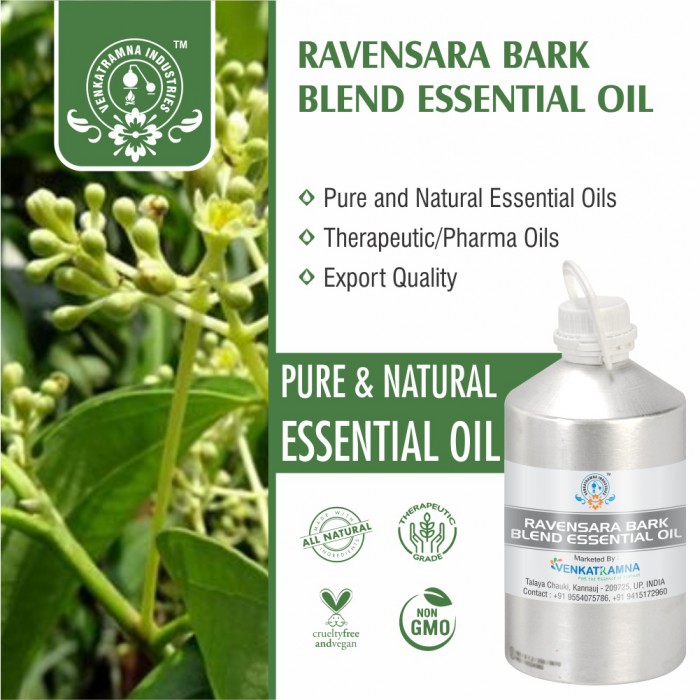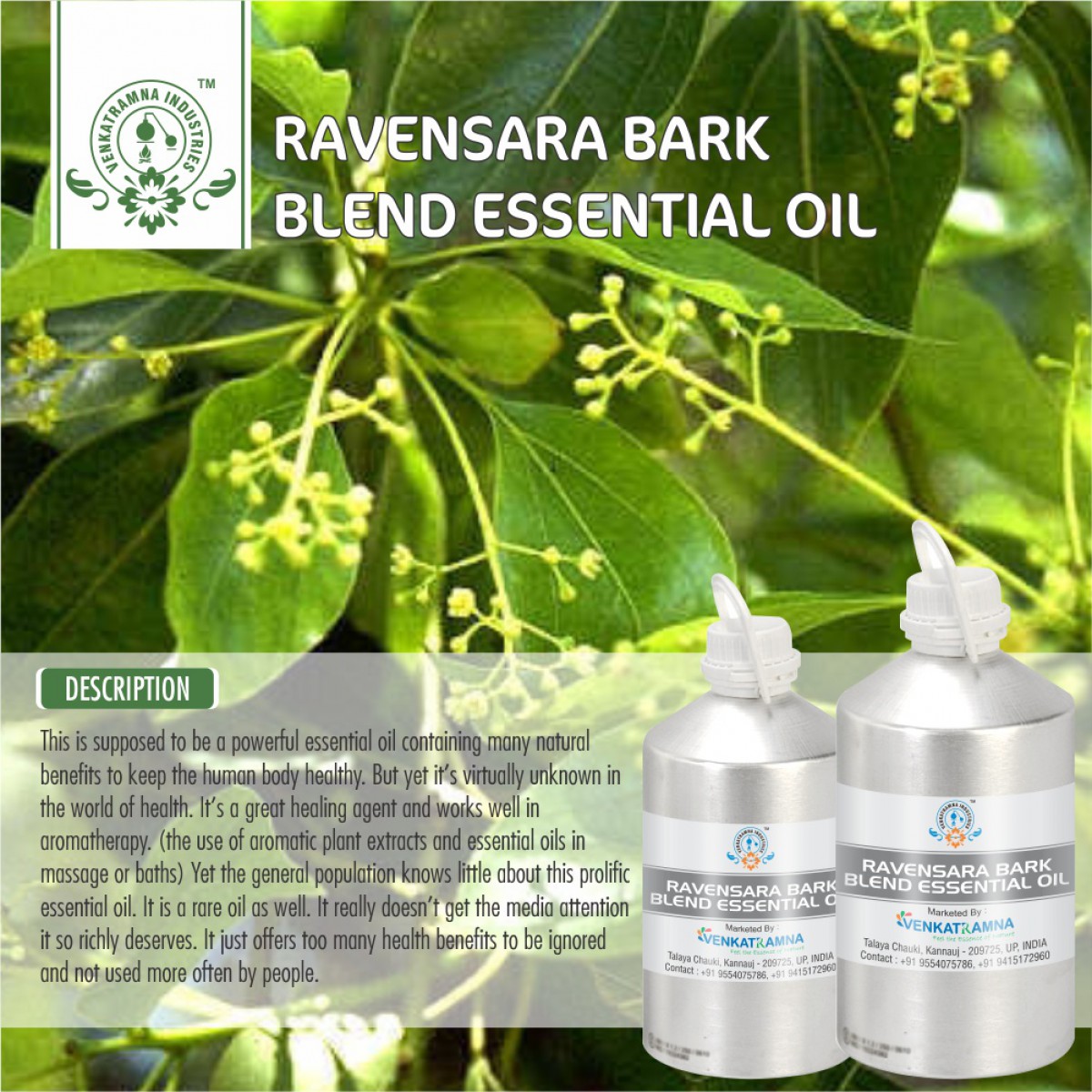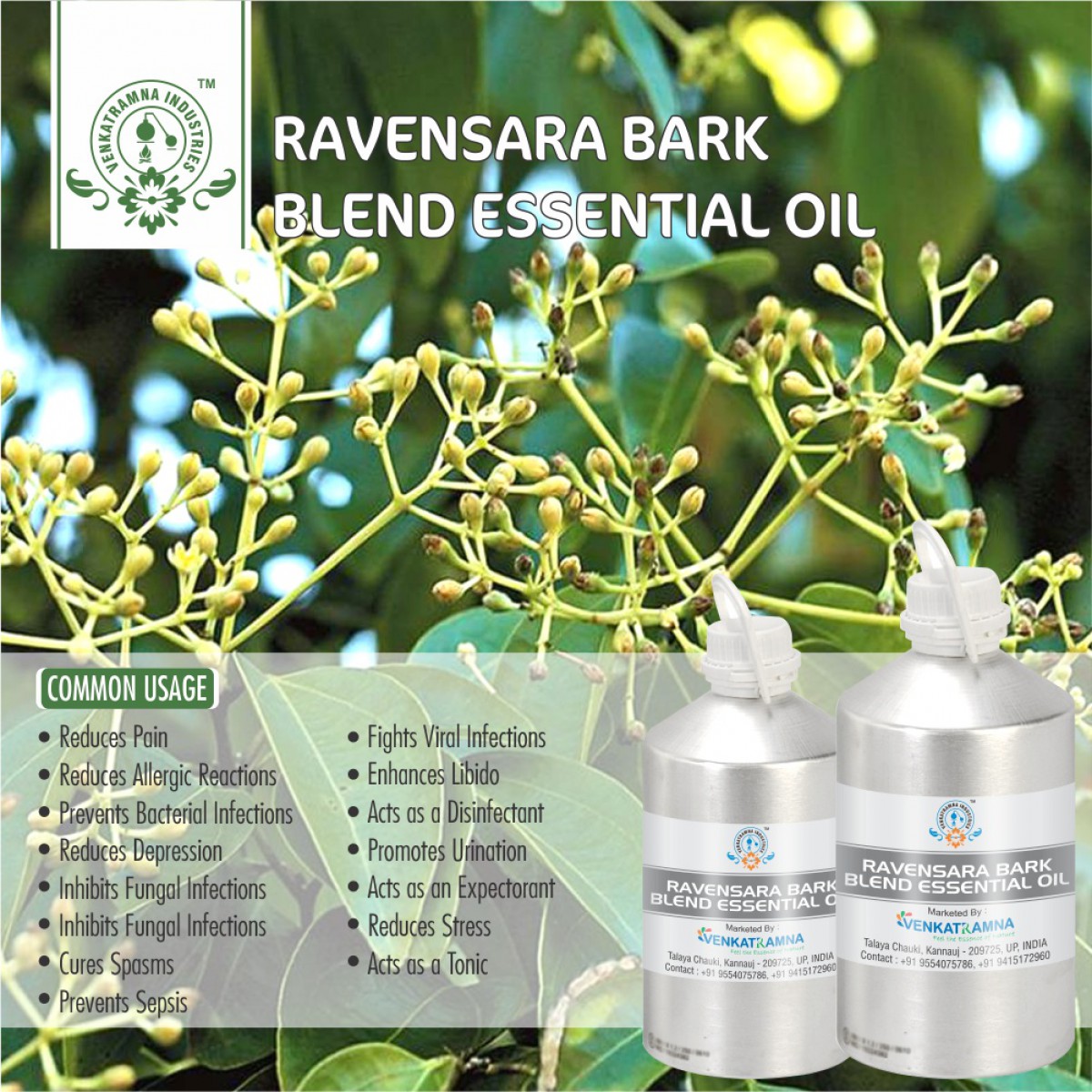Botanical Name: Ravensara aromatic Common name: Clove nutmeg Plant Read More
|
Botanical Name: |
Ravensara aromatic |
|
Common name: |
Clove nutmeg |
|
Plant
family: |
Lauraceae |
|
Genus: |
Ravensara |
|
Appearance/Color: |
A thin, clear,
yellowish brown liquid. |
|
Odor: |
Ravensara Essential Oil smells slightly medicinal,
eucalyptus-like, slightly sweet, and fruity. |
|
Blends With: |
Clove Bud,
Eucalyptus, Lavender and Rosemary |
|
Origin: |
Madagascar |
|
Source: |
Bark |
|
Method
of Extraction: |
Steam Distillation |
Ravensara aromatica Sonnerat is
an endemic tree of ever green and wet forests of east Madagascar. This species
is used to produce essential oil used in aromatherapy in Europe and America. Ravensara
is derived from trees in Madagascar. Because of is range of complementary
constituents, ravensara oil tends to ‘sweeten’ or enhance the effects of other
oils when used in therapeutic essential oil blends.
Therapeutic ravensara essential oil (Ravensara aromatica) is available from Madagascar, best made using the leaves, not the bark. Many sources of this oil mix the leaves and bark, which increases liver toxicity.
DISCLAIMER
The complete range of conditions
or methods of use are beyond our control therefore we do not assume any
responsibility and expressly disclaim any liability for any use of this
product. Information contained herein is believed to be true and accurate however,
all statements or suggestions are made without warranty, expressed or implied,
regarding accuracy of the information, the hazards connected with the use of
the material or the results to be obtained from the use thereof. Compliance
with all applicable federal, state, and local laws and local regulations
remains the responsibility of the user.
The FDA has not evaluated the
statements on this website. No claims are made by Venkatramna Industries as to
the medicinal value of any products from vriaroma.com or by us. The information
presented here is for educating our customers about the traditional uses of
essential oils and is not intended to diagnose, treat, cure, or prevent any
disease. You are responsible for understanding the safe application of these products.
If you have any questions, please call or email us for further information.
As per NAHA guidelines, New Directions Aromatics
(NDA) does not recommend the ingestion of essential oils. It is imperative to
consult a medical practitioner before using Essential Oils for therapeutic
purposes. Pregnant and nursing women and those taking prescription drugs are
especially advised not to use this product without the medical advice of a
physician. The oil should always be stored in an area that is inaccessible to
children, especially those under the age of 7.
In Madagascar, where ravensara plants
were first found and used by locals, ravensara essential oil is nicknamed “the
healing oil.” Though ravensara essential
oil is not as well-known as lemon oil or lavender essential oil, it is an
essential oil that is a favorite of natural healers and aromatherapists alike
for a multitude of reasons. Ravensara oil has found itself a wonderfully
beneficial and heath restoring niche when used with other essential oils.
Thyme, rosemary, marjoram, pine, ginger, sandalwood, grapefruit, bay, and cedar
wood are often blended with ravensara oil to enhance the smell of oils used in
aromatherapy as well as adding to the emotional, physical, and mental benefits
of the oils.
Ravensara oil is an excellent
choice for people who want to brew a fragrant, exotic-smelling soap that has
antibacterial and antifungal properties. A small dab of diluted ravensara oil
also can sanitize cuts and burns.* As an antiseptic and antibacterial essential
oil, ravensara essential oil’s properties have been well documented by
scientists and natural remedy experts alike. Because ravensara oil has
antiseptic, antifungal, and antibacterial properties, it is a great essential
oil to add to homemade cleaning products.* Herbalists have been using this oil
via spray, vaporizer, and fumigants for quite some time.
For those who use essential oils
as a personal perfume, ravensara could become a new favorite. This woody yet
spicy essential oil is great for mixing into a gender neutral scent, or as a
base for a more flowery scent. Because ravensara essential oil does have a very
strong scent, a little bit goes a long way. We love the way it smells when
combined with similarly exotic oils. The oil is said to have some aphrodisiac
qualities.
Aside from being an excellent
decongestant, many natural healers use ravensara as an aromatherapy oil.
Commonly used to promote lung health and sinusoidal health, ravensara oil also
can be mixed with bergamot and similar oils to lift moods and boost energy.
Even animals like dogs and cats have been known to get mellower in mood when
near a ravensara essential oil diffuser. It’s also worth noting that many
herbalists also cite ravensara oil as an aphrodisiac when used in aromatherapy.
Much like its more well-known counterpart, camphor, ravensara oil has also been
established as a natural relaxant. So, if you’re feeling stressed, mixing an
aromatherapy remedy which involves ravensara in one way or another is a very
wise move.
COMMON
USAGE
·
Reduces pain
·
Reduces allergic reactions
·
Prevents bacterial infections
·
Reduces depression
·
Inhibits fungal infections
·
Cures spasms
·
Prevents sepsis
·
Fights viral infections
·
Enhance libido
·
Acts as a disinfectant
·
Promotes urination
·
Acts as an expectorant
·
Reduces stress
·
Acts as a tonic
|
S.No |
Key Constituents |
Strength (%) |
|
1 |
Estragole |
90.0-95.0 |
|
2 |
Linalool |
2.0-6.8 |
Safety Summary
·
Hazards Potentially carcinogenic; may inhibit
blood clotting.
·
Contraindications Should not be taken in oral
doses.
Organ Specific Effects
·
Adverse skin reactions: May cause an
allergic reaction by skin contact.
·
Cardiovascular effects: Estragole
inhibits platelet aggregation, an essential step in the blood clotting cascade.
Systemic Effects
·
Acute toxicity: No information found.
·
Carcinogenic: Suspected Human Carcinogen
·
Skin corrosion / irritation May cause
irreversible damage to the skin; namely inflammation of the skin or the
formation of erythema and eschar or oedema following exposure up to four hours.
·
Serious eye damage / irritation May have
reversible effects on the eyes, such as eye irritation which is totally
reversible by the end of observation at 21 days.
·
Respiratory or skin sensitization No
additional data available.
·
Germ Cell Mutagenicity Cause for concern
owing to the possibility that it may induce heritable mutations in the germ
cells of humans.
·
Reproductive toxicity No additional data
available.
·
STOT-single exposure No additional data
available.
·
STOT-repeated exposure No additional data
available.
·
Aspiration hazard: Aspiration toxicity
includes severe acute effects such as chemical pneumonia, varying degrees of
pulmonary injury or death following aspiration. May be fatal if swallowed and
enters airways.
·
Photo-toxicity: No additional data
available.
·
Ecotoxicity: Toxic to aquatic life with long
lasting effects. The product must not be allowed to run into drains or
waterways.
·
Bioaccumulation: No data available
·
Mobility in soil: No data available
·
Persistence and degradability: No data available
·
PBT and vPvB assessment: No data available
Avoid direct
exposure into water streams and ground water sources.





 MSDS-Ravensera.pdf
MSDS-Ravensera.pdf




